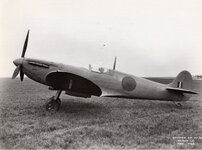- Thread starter
- #21
BarnOwlLover
Staff Sergeant
I do wonder how a Hornet's nacelle frontal area compares to that of a Mosquito's (I read somewhere in the neighborhood of 10% smaller, but I can't remember where), as well as the Mustang fuselage and the fuselage of a Griffon Spitfire. IMO, the Hornet nacelle and Griffon Spitfire fuselage forward of the cockpit look eerily similar in line and several contours without the valve cover fairings on the Spitfire, as well as the Hornet nacelle having several line and contour similarities with the Merlin Mustangs if you delete the supercharger intake off the Mustang.
Maybe I should phrase it as "is it worth it to get DH Hornet levels of power unit streamlining on a single seater" as far as reducing frontal area. Which, after all, was the point of the Merlin 130 engines for the Hornet having stuff moved around (reduce nacelle frontal area). Though, oddly, at the time the Hornet was conceived, the Merlin 60 series engines were what was initially envisioned for it.
Maybe I should phrase it as "is it worth it to get DH Hornet levels of power unit streamlining on a single seater" as far as reducing frontal area. Which, after all, was the point of the Merlin 130 engines for the Hornet having stuff moved around (reduce nacelle frontal area). Though, oddly, at the time the Hornet was conceived, the Merlin 60 series engines were what was initially envisioned for it.

